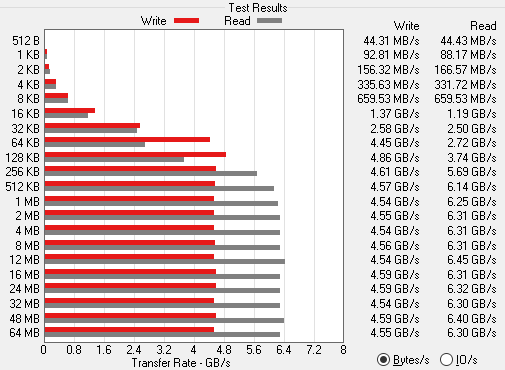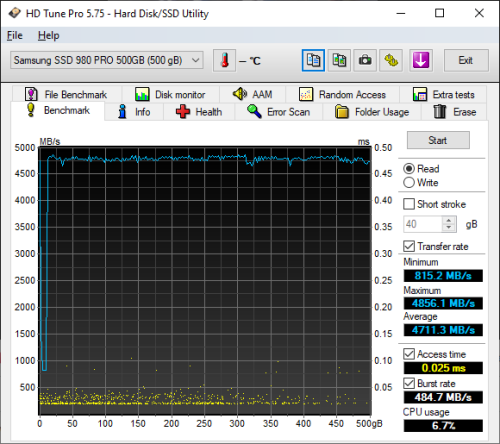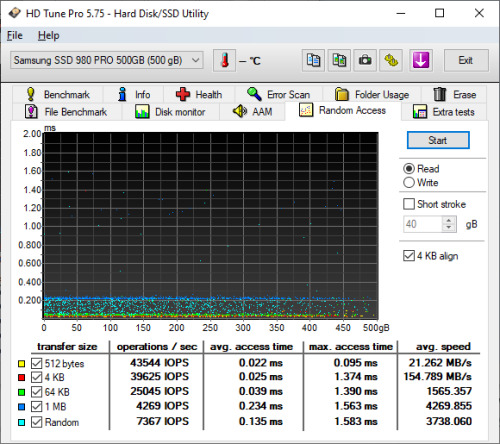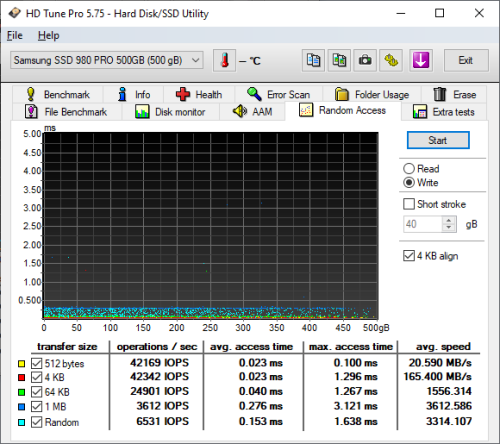![]()
![]()
Model: Silicon Power US70 1TB M.2 PCIe 4.0 Solid State Drive
Manufacturer: Silicon Power
Provided By: Silicon Power
Silicon Power is a relatively new name in the storage industry. Founded in 2003 by a group of professionals specializing in international business, global marketing and technical engineering, the company has already established itself as one of Taiwan's top manufacturers. With an eye for attractive and versatile design, Silicon Power has built its brand around the concept that its customers deserve products that represent who they are in life and mirror their personality. The end result is a variety of uniquely designed storage products including USB flash drives, memory cards and solid-state drives (SSD).
Earlier this year, Silicon Power introduced its first PCIe 4.0 SSD, the US70. Designed for gamers, overclockers, professionals and high-end business users, this M.2 form factor drive is powered by Phison's PS5016-E16 controller and offers features like low density parity check (LDPC) coding, E2E data protection, wear leveling and a built-in bad block management (BBM) mechanism that detects and marks bad blocks to eliminate access errors. The US70 is also equipped with up to 2TB of 3D TLC NAND flash as well as an ultra-fast PCIe Gen4 x4 NVMe 1.3 interface to deliver read and write speeds that are nearly 10 times faster than traditional SATA SSDs.
The US70 is available in 1TB and 2TB capacities. For this review, Silicon Power sent us the 1TB version of the drive which is capable of delivering up to 5,000 MB/s sequential read and 4,400 MB/s sequential write speeds.
Needless to say, this is only a taste of what the US70 has to offer. To give you an idea of what to expect, we'll take a closer look at Silicon Power's new PCIe 4.0 SSD and then see how well it performs. Does the US70 have what it takes? Can it deliver the value and performance we've come to expect from Silicon Power? Keep reading as we find out.
The US70 comes in a small, black and white box. In addition to a plastic window which lets you see what the drive looks like, the packaging advertises some of the drive's key features including its PCIe Gen4 x4 interface, support for NVMe 1.3, 1TB capacity and 5 year warranty.
Physical Features:
The US70 uses the 2280 form factor for M.2 (NGFF) SSDs. It measures 22 x 80 x 3.5 mm and weighs in at 8g. The drive also has an "M key" edge connector which provides PCIe SSDs with up to 4x lanes of bandwidth.
![]()
The US70 uses Phison's PS5016-E16 controller chip. This PCIe Gen 4 x4 SSD controller is powered by a dual-core ARM Cortex R5 processor with CoXProcessor technology and supports eight channels with up to 32 chip enables (CE) per channel. The E16 is also compatible with the latest 96-layer 3D TLC NAND flash and offers features like end-to-end data path protection, SmartECC technology and Phison’s 4th Generation LDPC ECC engine for improved drive reliability.
![]()
![]()
For the 1TB version of the US70, Silicon Power opted to use Toshiba's BiCS4 96-layer 3D TLC NAND flash. Looking at the picture above, you can see two 256GB NAND flash packages on either side of the PCB. The drive also has a pair of 512GB SK Hynix DDR4 SDRAM chips that are used for caching.
The test system used in this review is equipped with an AMD Ryzen 3 3100 CPU, MSI B550 GAMING PLUS motherboard, 16GB (8GB x 2) of Crucial Ballistix 3200 MHz DDR4 memory, Crucial P5 1TB SSD and a GIGABYTE GeForce GTX 1060 WINDFORCE OC 6G graphics card. For the operating system, I used the latest version of Windows 10 Pro.
To test the performance of Silicon Power's US70 SSD, I ran a series of benchmarks using CrystalDiskMark, HD Tach RW, ATTO Disk Benchmark, AS SSD, HD Tune Pro, Anvil's Storage Utilities, Iometer and PCMark. For comparison, I've also included test results from the ADATA XPG GAMMIX S50 Lite, Silicon-Power UD70, Crucial P2, Samsung's 980 PRO, SK hynix Gold P31, Crucial P5, ADATA SWORDFISH, ADATA FALCON, Lexar NM610, Silicon Power P34A60, Patriot P300, Plextor M9PG Plus, Plextor M9PY Plus, ADATA XPG SX6000 Pro, Western Digital WD Black SN750, Samsung 970 EVO Plus, ADATA XPG SX8200 Pro, Crucial P1, ADATA XPG SX8200, Western Digital WD Black NVMe, Samsung 970 EVO, Samsung 970 PRO, Plextor M9Pe, Plextor M8Se, Patriot Hellfire, ADATA XPG SX8000, Samsung 960 PRO, Toshiba OCZ RD400, Samsung 950 PRO, Samsung 870 QVO, Silicon Power P60, SK hynix Gold S31, ADATA Ultimate SU750, Samsung 860 QVO, Samsung 860 PRO and Crucial MX500.
![]()
As I mentioned earlier, the UD70 uses Phison's PS5016-E16 controller chip. Looking at the screenshot above, you can see that there is a slight difference in performance when reading incompressible (0%) and compressible (100%) data.
CrystalDiskMark 7.0.0:
First, I ran a few quick tests using CrystalDiskMark. This benchmark measures the performance of a storage device by testing its sequential and random read and write speeds. For this test, we're using the peak and real world profiles.
![]()
According to Silicon Power, the 1TB version of the US70 is capable of reading at 5,000 MB/s and writing at 4,400 MB/s. While the drive had no problems reaching its rated read speed, it came up short in CrystalDiskMark's sequential write speed test.
![]()
As you'd expect, the US70 wasn't as fast when tested with the "real world" profile which uses a single thread and a much lower queue depth. Nevertheless, it was still able to read at 3,220 MB/s and write at more than 4,200 MB/s.
HD Tach RW 3.0.4.0:
Next, I used HD Tach to test the US70's read, write and burst speeds as well as its random access time and CPU usage.
![]()
Looking at the screenshot above, you can see that the US70 had average read and write speeds of 2538.3 MB/s and 2420.0 MB/s respectively, as well as a burst speed of 2837.1 MB/s.
ATTO Disk Benchmark 4.01:
I also used ATTO Disk Benchmark to test the US70's sequential read and write speeds. The tests are run using blocks ranging in size from 512B to 64 MB and the total length set to 256MB.
When tested with ATTO, the US70's read speeds topped out at about 5.26 GB/s and its write speeds at 3.96 GB/s.
AS SSD:
AS SSD is a relatively new benchmark designed specifically for solid state drives. The application contains five synthetic tests used to determine the sequential and random read and write performance of a drive.
AS SSD also includes a copy benchmark. This test copies an ISO (two large files), program (many small files) and game (small and large files), returning the speed and duration of each.
HD Tune Pro 5.75:
Next, I ran a series of tests using HD Tune Pro. This hard disk utility measures a drive's performance by testing its sequential read and write speeds as well as its access time, burst rate and CPU usage. For this review, I'm also going to use it to benchmark the US70's random read and write speeds, random access times and the number of operations per second.
The US70 performed relatively well when benchmarked with HD Tune. The drive had average read and write speeds of 4,403.6 MB/s and 3,904.1 MB/s, respectively.
When reading 4KB blocks, the US70 reached 44,208 IOPS and had an average speed of 172.690 MB/s. The drive was even faster when writing, reaching 53,769 IOPS with an average speed of 210.036 MB/s.
Anvil's Storage Utilities:
Anvil's Storage Utilities is another benchmark designed with SSDs in mind. The standard storage benchmark measures a drive's performance by testing its transfer speeds, access times and IOPS.
![]()
Iometer:
Lastly, I ran a series of tests using Iometer. This tool can be configured to benchmark a number of things. In this case, I used it to measure the US70's read and write speeds and the number of operations per second. The tests were run using random bytes and a queue depth of 3.
![]()
The US70's performance was very similar to what we saw in our other tests. The drive was able to read at 4784.36 MB/s and write at 4074.88 MB/s.
![]()
The US70's random read and write performance was hit and miss when tested with Iometer. While the drive was able to read at a respectable 329.82 MB/s, its write speed averaged out at only 552.12 MB/s.
![]()
Silicon Power really doesn't say what the US70 is capable of in regards to IOPS. In our tests, the drive reached 84,434 random read IOPS and 141,343 random write IOPS.
![]()
As with most drives, the US70 performed better with more threads and at higher queue depths. With eight threads and the queue depth set to 32, it reached 514,061 random read IOPS and 439,074 random write IOPS.
PCMark 8 - Storage Test:
PCMark 8 is a complete benchmark for Windows. It includes five benchmark tests, each designed around a specific scenario. The storage benchmark measures drive performance using real-world traces recorded from Adobe Creative Suite, Microsoft Office and a selection of popular games.
![]()
PCMark 8 also includes a consistency test which measures the performance consistency and degradation tendency of a storage system. The test reports the performance level at the start, the degraded steady-state and the recovered state as well as the number of iterations required to reach the degraded state and the recovered state. For this test, we are focusing on the Adobe Photoshop (Heavy) trace and will look at both the bandwidth and latency of the drive
![]()
![]()
The US70's performance was hit and miss in this test. The drive was relatively quick during the degradation and steady phases. However, it lagged behind the SK hynix Gold P31 and Crucial P5 during the recovery phase, topping out at only 887 MB/s.
PCMark 10 - Full System Drive Benchmark:
PCMark 10's Full System Drive Benchmark uses a wide-ranging set of real-world traces from popular applications and common tasks to fully test the performance of the fastest modern drives. This benchmark produces an overall score as a measure of drive performance. Comparing devices is as simple as comparing scores. The tests also measure and report the bandwidth and average access time performance for the drive.
![]()
Thanks to its high bandwidth and low latency, the US70 did fairly well in PCMark 10's Full System Drive Benchmark. Unfortunately, this wasn't enough to top the Samsung 980 Pro or PCIe 3.0 SSDs like the Plextor M9PG and SK hynix Gold P31.
TRIM Performance:
While SSD's offer many benefits, there are some downsides to using flash memory. One of the biggest issues people run into is performance degradation. Over time, an SSD will run out of fresh blocks and will have to write over data the file system has marked as deleted. This procedure is very complicated and can slow an SSD's write speeds considerably.
To fix this problem, most manufacturers have added TRIM support to their SSDs. The TRIM command allows an operating system, such as Windows 10, to tell an SSD which data blocks are no longer in use. Using this information, the drive pro-actively erases these blocks and adds them to the free block pool.
![]()
To test the US70's TRIM and garbage collection functions, I first put the drive in a "dirty" state. I used Iometer to fill 80% of the drive and then ran a random write test for 30 minutes. Looking at the screenshot below, you can see that the US70's average read and write speeds dropped to 1318.28 MB/s and 269.29 MB/s, respectively.
![]()
Silicon-Power US70 - Dirty
To see how well the US70 could recover, I let the computer sit for about 30 minutes and then reran the test. The drive wasn't able to reach the factory fresh performance shown in our earlier tests. However, its sequential write speed climbed up to 1153.22 MB/s.
![]()
Silicon-Power US70 - After TRIM
Lastly, I used Parted Magic to perform a secure erase on the US70. With the drive wiped clean, it had average read and write speeds of 4103.77 MB/s and 3762.51 MB/s, respectively.
![]()
Silicon-Power US70 - Secure Erased
Temperature:
While PCIe SSDs like the US70 offer impressive performance, they also generate a good amount of heat. At idle, the drive's temperature hovered around 30 ºC. When pushed hard, the drive reached temperatures as high as 54 ºC when reading and 55 ºC when writing.
![]()
These temperatures had no impact on the US70's performance. No matter how hard I pushed it, the drive did not throttle its read or write speeds in any noticeable way.
![]()
Final Thoughts:
The Silicon Power US70 is an excellent choice for the gamer, overclocker or creative professional looking for a fast, yet affordable, PCIe 4.0 SSD for their desktop computer. This compact, M.2 form factor drive is powered by Phison's PS5016-E16 controller and is available with up to 2TB of 3D TLC NAND flash. Combine this with an SLC cache, DRAM cache buffer and a PCIe Gen4 x4 NVMe 1.3 interface and you have a drive capable of reading and writing at speeds well beyond that of the fastest PCIe 3.0 SSDs. In our sequential read and write tests, the 1TB version of the US70 was able to read at speeds as high as 5,009 MB/s and write at speeds in excess of 4,275 MB/s. The drive also did reasonably well in our random write tests. While it lagged behind some of the drives at low queue depths, it handled heavier workloads like a champ, topping out at a little more than 439,000 IOPS.
Of course, fast read and write speeds aren't the only things the US70 has to offer. Along with support for SLC caching, the US70 features low density parity check (LDPC) coding and E2E data protection for enhanced data integrity and reliability. The drive also utilizes wear leveling to equalize the wear of each NAND flash block as well as a built-in bad block management (BBM) mechanism that detects and marks bad blocks to eliminate access errors. Last, but not least, the US70 is covered by a five year warranty.
The US70 is available now in 1TB and 2TB capacities and can be purchased directly from Silicon Power or through retailers like Amazon for $175 and $350, respectively.

Highs:
- Available in 1TB and 2TB capacities
- PCIe 4.0 x4 interface with NVMe protocol
- Phison PS5016-E16 controller
- Equipped with 3D TLC NAND flash
- Excellent sequential read and write speeds
- Good random read performance
- Small M.2 2280 form factor
- Built-in bad block management (BBM) mechanism
- LDPC coding and E2E data protection
- SLC caching and DRAM cache buffer
- Reasonably priced
- 5 year warranty
Lows:
- Mediocre random write performance at low queue depths
- Does not support hardware based encryption








